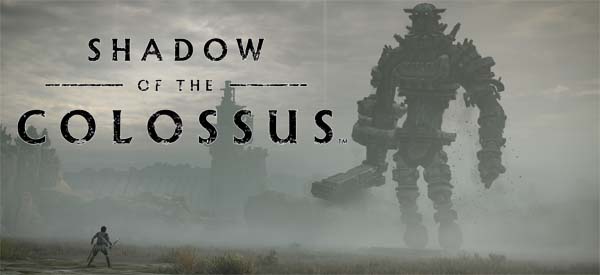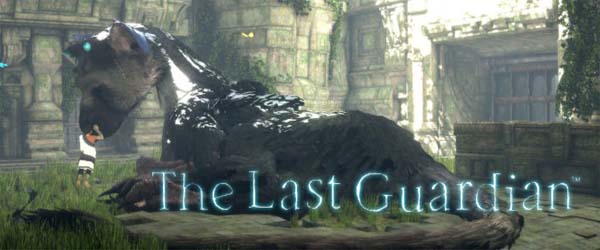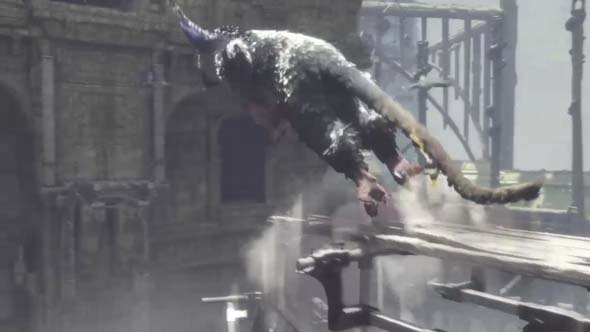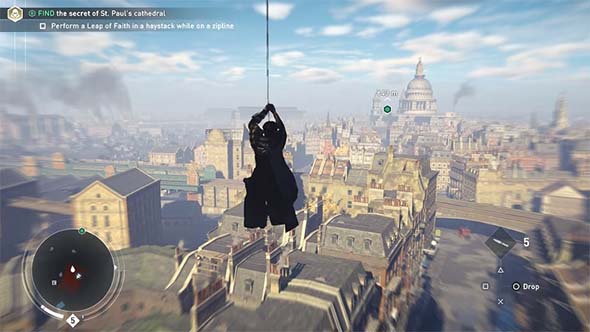I think the last few years have brought us to a bit of an inflection point for open world video games -- which I feel have been in kind of a rut for the better part of the last decade. Long-time readers of my personal blog will probably be very familiar with my complaints. The two core complaints that I've had with this particular game design paradigm are:
- That the map itself rarely feels meaningful as a game space, and instead serves primarily as a convoluted mission-select screen full of time-wasting filler content.
- That the sandboxy nature of the game design means that the world and narrative often feel stagnant (as if in a kind of "limbo").
This blog is mostly a transcript of a YouTube video that I posted.
These problems can be traced back at least to 2001's Grand Theft Auto III, which set many of the conventions of open world games for the next two decades. Companies from Ubisoft to Bethesda, and many others, would copy GTAIII's structure of going to a location on the map to trigger a mission in an aggressively linear, cinematic story, while spending free time on time-wasting filler content that did nothing to move the story forward.
Grand Theft Auto III set many of the standards
for open world games over the past 20 years.
Aside from Ubisoft's Assassin's Creed and Far Cry series, these problems have been present to varying degrees in everything from Skyrim to The Saboteur to Mad Max to Just Cause to The Amazing Spider-Man to Fallout 4 to Metal Gear Solid V, and many more. It started getting to the point that when I would see a game advertise the size of its map, I'd roll my eyes and lose interest. "Great, that's just more wasting my time walking from place to place with nothing meaningful or interesting or challenging to do."
Where you are on the map, where you're going, and how you get there was almost completely irrelevant in these games, which made the map itself (no matter how big and scenic it might be) feel mostly irrelevant. In fact, some games started introducing mechanics that let you bypass the map entirely by letting you fly, glide, or zipline to points of interest without having to engage with the space in between. In the case of Metal Gear Solid V's Afghanistan map, the roads are lined with sheer cliffs, funneling the player along linear paths from enemy outpost to enemy outpost, with practically nothing for you to do in the space between outposts. Even though the stealth action at those outposts was some of the best in the series, I couldn't help but think that Snake Eater provided a much more fulfilling experience of living within an open-ended game world.
I would roll my eyes whenever a game advertised the size of its map or hours of content.
The maps themselves weren't playspaces anymore; they were just the spaces in between towns, dungeons, and set pieces where the actual gameplay would take place. Just point in the direction of a waypoint and walk in a straight line, stopping every minute or so to pick up an umpteenth collectible, or climb an umpteenth tower, or sneak into an umpteenth enemy base and kill the umpteenth recycled mini-boss. Stop me if you've done all this before... A majority of the time with the game was just travelling around the map without any engagement in any gameplay systems or mechanics or strategies, and then playing some rote, recycled filler content to pass the time. And as the maps got bigger and bigger, the filler content just kept multiplying.
...
[More]
abf2cb68-ef06-4e1e-aa8a-4f1527dce74f|1|5.0
Tags:open world, sandbox, game design, map, traversal, obstacle, travel, exploration, cartography, geography, narrative, ludonarrative, Ubisoft, Bethesda, Assassin's Creed, Assassin's Creed IV: Black Flag, Final Fantasy XV, The Legend of Zelda: Breath of the Wild, Red Dead Redemption 2, Marvel's Spider-Man, Firewatch, Miasmata, Sunset Overdrive, Death Stranding, Shadow of the Colossus, Resident Evil

I debated whether to turn this into a retro review of Shadow of the Colossus, or to focus this review on whether or not this particular remake manages to re-capture the magic of the original. Honestly though, what could I possibly say about Shadow of the Colossus that hasn't already said? I might as well try to write a retro review of Citizen Kane or Hamlet!
The original game (released in 2005 by Fumito Ueda's Team Ico at Sony) is a classic and a masterpiece of interactive art. It ranks right up there with games like Portal, Half-Life, Super Mario Bros., and Tetris as a contender for the title of "best video game ever made". Virtually every creative decision that the original team made was the absolute perfectly right decision to make. From the desolate and bleak, yet hauntingly-beautiful landscape. To the immense sens of scale and grandeur that embodies almost every crevice of the game and the sheer smallness of the protagonist himself. To the intimidating, yet majestic aesthetic design of the colossi themselves. To the bittersweet death animations of the Colossi, accompanied by Kow Otani's outstanding score, that makes you question the rightness of your actions. To the way that Agro's independent actions, slightly imprecise controls, and occasional insubordination sell the idea that she's an autonomous living character, rather than a simple vehicle that you pilot as an extension of the player avatar. To the decision to not drag down the game's pace or pollute the overworld with a single encounter with grunt enemies. And on and on...
Shadow of the Colossus was like a digital vacation when it was released in 2005.
It's as perfect a video game as has ever been made. It's the centerpiece of any "games as art" argument (if we still even have to have that argument anymore). Critics and analysts before me have already consecrated Shadow of the Colossus far beyond my petty powers to add or detract.
Bluepoint is the masters of remasters and remakes
Why couldn't Bluepoint have done
the Silent Hill HD Collection?!
Because of how absolutely brilliant the original game is, I had reservations about any attempt to remaster or remake it, especially after the debacle that was Hijinx Studios' Silent Hill HD Collection. Fortunately, however, the remake privilege (or burden, depending on how you want to look at it) was given to Bluepoint Games, the veritable masters of remasters and HD collections. Bluepoint had already released an HD remaster of Shadow of the Colossus on the PS3 back in 2011. I never played it because I thought the PS2 version of the game still looked fantastic and didn't need to be remastered to be enjoyed. That HD remaster was very well-received by the general public, as have been all of Bluepoint's remasters, as far as I am aware. Why couldn't Konami have given Silent Hill to these folks?! [More]
a697dbc5-0ae9-4d08-b310-36e7131bc0ae|2|5.0
Tags:Shadow of the Colossus, Bluepoint Games, Team Ico, Fumito Ueda, Kow Otani, PlayStation 2, PlayStation 4, remake, remaster, colossus, open world, puzzle, platformer, horse, Agro, Wander, Dormin, trophy

Being the follow-up to a masterpiece is no small order. Being the follow-up to two masterpieces is a Sisyphean task. Ico is a masterpiece of its time. Fumito Ueda and SIE Japan managed to follow that game with Shadow of the Colossus - a masterpiece of even higher order. The bar was set tremendously high for the team's third project: The Last Guardian. Multiple delays, a change in platform from PS3 to PS4, and Fumito Ueda's departure from Sony squashed a lot of the hype for the game. Might the game turn into vaporware? Or might it release in a condition analogous to Metal Gear Solid V?
On the surface, The Last Guardian comes off as being a mash-up of Ico and Shadow of the Colossus. Superficially, it's much more in-line with Ico: you play as a small boy who must guide a companion through a maze of environmental platformer obstacles and adventure puzzles. The catch this time around is that the companion happens to be a giant animal that you can climb and ride on.

The Last Guardian share more with Ico, but your companion is a giant creature that you climb and ride on.
The big difference though, is that The Last Guardian is sort of an inversion of the gameplay of Ico. In Ico, the player character had to guide a helpless (some even speculated she is blind) princess through a castle and defend her from shadow monsters that try to drag her away. In The Last Guardian, however, it is the player character - the boy - who is mostly helpless. True, you have most of the agency and are guiding Trico through the maze. But Trico is the one with all the power, and your progress is often dependent on Trico getting you past obstacles.
This point is most hammered home by the game's combat mechanics - or rather, its almost complete lack thereof. The boy can't fight off the stone knights that hunt him down. You can only run away, or let Trico smash them into dust for you. If they catch you, they drag you off to a nearby mysterious blue doorway (a parallel to the smokey portals that the smoke monsters dragged Yorda through in Ico), and all you can do is mash buttons to kick and squirm. Ico and Shadow of the Colossus experimented with player agency by making the player question the motivations of the character and wonder if maybe you're doing more harm than good. The Last Guardian toys with agency in other ways. In this game, you, the player, are the helpless tag-along character in an escort quest. You get a glimpse through the eyes of Yorda from Ico or Ashley from Resident Evil 4.
The boy can't fight back, he can only kick and squirm - much like Yorda from Ico.
Not entirely though. The player and Trico make mutual contributions to progress, and their contributions are shared much more than Ico and Yorda. Much like how Yorda could occasionally open the magically-locked doors, the boy in Guardian also has to pull levers and open doors for Trico to pass from room to room. The boy also has to destroy glass eye murals that mesmerize and terrify Trico to the point of paralysis. The boy also hunts down barrels of [supposedly] food for Trico to eat whenever Trico is tired or wounded. But then there's also parts of the game in which the boy simply hops on Trico's back, and Trico leaps away to the next puzzle area without the player having to do anything... [More]
54c716c5-4407-4898-bee0-0725c5a7ce3e|1|5.0
Tags:The Last Guardian, Team Ico, Fumito Ueda, puzzle, platformer, Trico, child, escort quest, Ico, Shadow of the Colossus, PlayStation 4, Sony, exclusive, vaporware, Achievement unlocked
Last time, I discussed what I perceive as a problem in the way that most open world games (specifically, sandbox games) design their maps and use the space that the maps offer - or fail to use that space, to be more specific. So many open world maps end up feeling less like actually playing the game, and more like a convoluted mission-select and collectible checklist screens. This problem is especially bad in the Ubisoft model of design, and is also a problem (to a lesser extent) in Bethesda's open worlds. Due to the popularity of these developers' franchises, many other developers have been cloning these styles of games to one extent or the other, to the point at which Ubisoft's open world model seems to be the go-to template for any developer trying to make an open world game. These games aren't necessarily bad. They just aren't very good at making the space of their maps feel meaningful in its own right.

Many open world games have large, expansive maps that mostly feel empty and pointless,
as the player rushes through them simply to get to the next map marker or checklist item.
But now that I've established what I see as a problem, I want to focus on positive feedback. In this discussion, I'm going to look at a handful of games that should serve as inspirations for would-be open world developers. Ironically, some of these games aren't even open world games, but they still pose valuable lessons for how games that are open world could better use their game spaces. That isn't to say that the games discussed here are perfect. In fact, many of them have their own major flaws. But each of them has some element of design that utilizes the actual game map as a component of active play, rather than just a space in which game sequences exist. First, let's take a look at a game that was re-made recently, and use it as a "before and after" case study of map design... [More]
75d0658b-0278-43f3-a9e5-d3df3d01939d|4|4.3
Tags:open world, map, traversal, travel, cartography, geography, narrative, ludonarrative, ludonarrative dissonance, quest, vehicle, driving, racing, exploration, wasteland, survival, resources, Ubisoft, Bethesda, Resident Evil, Metal Gear Solid V: the Phantom Pain, Assassin's Creed, The Elder Scrolls, Skyrim, The Witcher 3, Grand Theft Auto, Grand Theft Auto V, Grand Theft Auto: San Andreas, Shadow of Mordor, Fallout, Fallout: New Vegas, Wasteland 2, Mad Max, Miasmata, Assassin's Creed IV: Black Flag, Burnout: Paradise, Shadow of the Colossus, Dark Souls
|

| 12 | | | | | | | 60 | | 11 | | | | | | | 55 | | 10 | | | | | | | 50 | | 09 | | | | | | | 45 | | 08 | | | | | | | 40 | | 07 | | | | | | | 35 | | 06 | | | | | | | 30 | | 05 | | | | | | | 25 | | 04 | | | | | | | 20 | | 03 | | | | | | | 15 | | 02 | | | | | | | 10 | | 01 | | | | | | | 05 |
|